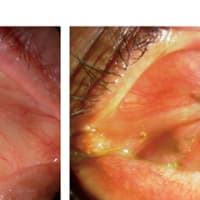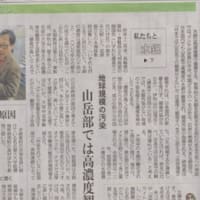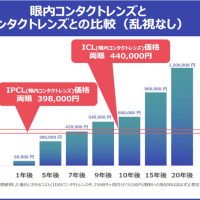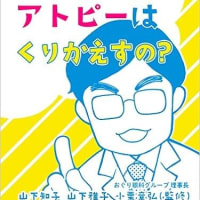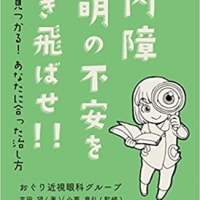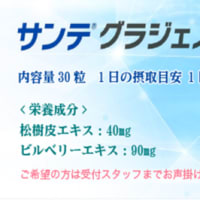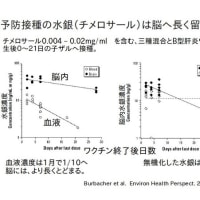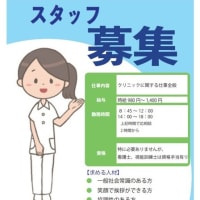③ 多焦点ソフトコンタクトレンズ: 多焦点ソフトコンタクトレンズは、
④ 特殊なメガネによる近視進行抑制: 海外では、
以前、当院でも処方していた『累進屈折力レンズ眼鏡』
「雲霧」目的のトレーニングメガネが廉価で扱いやすいため、
⑤ レッドライト治療法(red light therapy): 2014年に中国において長波長の650nmの赤色光が、
-----------------------------------------------------------------------
おぐりクリニック https://oguriganka.or.jp/
〒526-0847
滋賀県長浜市山階町451
ネットショップ オピュール https://www.rakuten.co.jp/oland/
メールマガジンの登録はこちら
https://oguriganka.jp/p/r/1ug9kI8X
Last time, we explained orthokeratology (at our hospital, iOK® = individual, Oguri Kinshi, Orthokeratology) as ①.
This time, we will introduce the remaining four treatments.
....
② Low concentration atropine eye drops: It is known that atropine eye drops have a strong effect in suppressing the progression of myopia, but 1% atropine eye drops (normal concentration) can cause side effects such as pupil dilation and accommodative palsy.
In addition, after treatment is discontinued, there is a problem of rebound, which can accelerate the progression of myopia.
However, a study in Singapore showed that even 0.01% atropine eye drops, diluted 100 times, had a 60% inhibitory effect on refractive index compared to no eye drops, and that the effect continued even after the eye drops were discontinued without rebound.
However, it is said that the effect varies from person to person, and about 10 years ago, our hospital made our own atropine and gave it to patients, but it did not have a clear effect.
In addition, the inhibitory effect on axial length elongation, which is the main cause of myopia progression, has not been shown to be as effective as the inhibitory effect on refractive index, so it is not cost-effective and is not currently performed at our hospital.
③ Multifocal soft contact lenses: Multifocal soft contact lenses are bifocal contact lenses for presbyopia correction, which generally have a spherical power for distance and an add power for near vision.
Overseas, various companies have developed multifocal soft contact lenses with various designs to inhibit the progression of myopia in children, and their effectiveness is beginning to rival that of orthokeratology.
We can prescribe them at our clinic.
Compared to orthokeratology, they are less irritating and easier to wear, and they are as easy to prescribe as disposable contact lenses for day care. In some countries, they are used more frequently than low-concentration atropine eye drops or orthokeratology to prevent the progression of myopia in children.
However, in many cases, orthokeratology is more advantageous in terms of cost, and our clinic has experienced that patients who have previously been prescribed multifocal soft contact lenses have found that when they switch to orthokeratology, they are able to live with the comfort of living without glasses and are much more satisfied with the cost-effectiveness.
④ Prevention of myopia progression with special glasses: Overseas, glasses are sold that aim to prevent the progression of myopia by applying a lot of light that focuses in front of the retina to the peripheral retina or by reducing the contrast of the peripheral retina.
It has been reported that the elongation of the eye axis is reduced by an average of 50 to 60% compared to regular glasses or contact lenses, but they have not been introduced in Japan because clinical trials are required.
There is a method to suppress the elongation of the eye axis by using "progressive power lens glasses" that we used to prescribe at our clinic, which reduces the accommodative power when looking at close objects and prevents defocusing at the center of the retina.
"Progressive power lens glasses" are known to suppress the progression of myopia by an average of 10 to 20% compared to regular glasses or contact lenses, and these glasses can be used in Japan. However, the effect is small and constant attention is required to adjust the position of the glasses, so they have not spread much.
Training glasses for "fog" purposes are inexpensive and easy to use, so our clinic recommends "training glasses".
They can be carried around at all times, do not require hospital visits, and are expected to have the same effect as "progressive power lens glasses" by wearing them for about 5 to 10 minutes every day.
《On sale at our clinic, 3,300 yen (tax included)》
⑤ Red light therapy: In 2014, it was discovered in China that long-wavelength red light of 650 nm has the effect of suppressing excessive elongation of the eye axis.
It is believed to improve the metabolic rate and blood flow of the choroid, and to control the axial length of the eye.
All you need to do is look into visible red light of 650 nm for three minutes, twice a day.
When only the group with good compliance who followed the treatment properly more than 75% of the time was selected, it was reported that the effectiveness of preventing the progression of myopia was close to 90%.
Clinical trials are currently being conducted at some university hospitals in Japan.
If the only goal is to "suppress the progression of myopia," as in the title of this article,
the "training glasses" introduced in ④ can be easily used anytime and anywhere,
and are the safest way to suppress myopia.
However, methods ② to ⑤ cannot be expected to improve naked eye vision.
Orthokeratology is the only way that elementary and junior high school students can realize their wish of "improving their eyesight and living without glasses or contact lenses."
If you would like to experience your child's eyesight recovery (orthokeratology and contact lens rental), reservations are required, so please make a reservation by phone.
上次,作为①,我们解释了角膜塑形术(iOK®=个人,小栗旬,我们诊所的角膜塑形术)。
这次,我们将介绍剩下的四种治疗方法。
。 。 。 。 。 。 。 。 。 。 。 。 。 。 。 。 。 。 。 。 。 。 。 。 。 。 。
②低浓度阿托品滴眼液:众所周知,阿托品滴眼液对抑制近视加深有很强的作用,但1%阿托品滴眼液(正常浓度)存在瞳孔散大、睫状肌麻痹等副作用。
还有一个问题是,治疗停止后会出现反弹,加速近视加深。
但新加坡的一项研究发现,即使是0.01%阿托品滴眼液稀释100倍,与不滴眼液相比,对屈光值的抑制效果也接近60%,而且即使停滴后也没有反弹效果结果表明,效果没有发生,并且效果持续。
不过据说效果因人而异,大约10年前,我们医院也自己制作并给患者服用,但没有获得明显的效果。
另外,对于近视加深的本质——眼轴延长的抑制效果,尚未显示出与屈光值同样的充分的抑制效果,因此不具有成本效益,目前尚未使用。在我们医院。
③ 多焦点软性隐形眼镜:多焦点软性隐形眼镜是矫正老花眼的双焦点隐形眼镜,一般具有远视力的球面度数和近视力的附加度数。
在国外,各公司正在开发各种设计的多焦点软性隐形眼镜,以防止儿童近视加深,并开始显示出可与角膜塑形术相媲美的功效。
也可以在我们医院开处方。
与角膜塑形镜相比,它更容易佩戴,因为它的刺激性较小,并且像一次性隐形眼镜一样易于处方,因此在一些国家,它的使用频率较低,以防止儿童近视加深,它超过了低浓度。阿托品滴眼液和角膜塑形术。
然而,角膜塑形术在成本方面往往更具优势。
在我们医院,过去曾配戴多焦点软性隐形眼镜的患者,
当您改用角膜塑形镜后,您就可以享受无需肉眼的舒适生活。
由于成本效益,我们的满意度显着提高。
④ 使用特殊眼镜抑制近视加深:在国外,眼镜通过使周边视网膜暴露于大量聚焦在视网膜前方的光线,或降低周边视网膜的对比度来抑制近视加深。正在发售。
据报道,与普通眼镜或隐形眼镜相比,眼轴伸长平均可抑制50%至60%,但由于需要临床试验,尚未在日本引入。
通过使用我们医院以前开出的“渐进屈光力镜片眼镜”,我们可以减少看近处物体时的调节能力,防止视网膜中心散焦,并抑制眼轴的伸长。去做吧。
众所周知,与普通眼镜或隐形眼镜相比,“渐进屈光力镜片眼镜”可以平均抑制近视加深 10% 至 20%,并且这种眼镜可以在日本使用。但由于其效果较小且在调整眼镜位置时需要不断注意,因此并未得到广泛应用。
我们诊所推荐以“云雾”为目的的“训练眼镜”,因为它们价格便宜且易于使用。
它可以随身携带,不需要去医院,每天佩戴约5至10分钟,预计可以达到与渐进屈光力镜片眼镜相同的效果。
[本院有售 3,300日元(含税)]
⑤红光疗法:2014年,我国发现波长650nm的长红光具有抑制眼轴过度伸长的作用。
被认为具有改善脉络膜代谢率和血流量、控制眼轴长度的治疗效果。
您所需要做的就是每天两次观察 650nm 的可见红光,每次 3 分钟。
据报道,只有那些依从性良好、坚持治疗时间超过 75% 的人,才发现预防近视加深的效果接近 90%。
目前日本的一些大学医院正在进行临床试验。
。 。 。 。 。 。 。 。 。 。 。 。 。 。 。 。 。 。 。 。 。 。 。 。 。 。 。
如果这篇文章的目的是“抑制近视加深”
④中介绍的“训练眼镜”可以随时随地轻松完成。
这是抑制近视最安全的方法。
然而,方法②至⑤不能指望改善肉眼视力。
“我想改善我的视力,过上不戴眼镜或隐形眼镜的生活。”
中小学生怎样才能实现这个愿望呢?
角膜塑形术是唯一的一种。
如果您想为孩子体验视力恢复(角膜塑形术/隐形眼镜租赁),我们需要预约,因此请通过电话预约。










